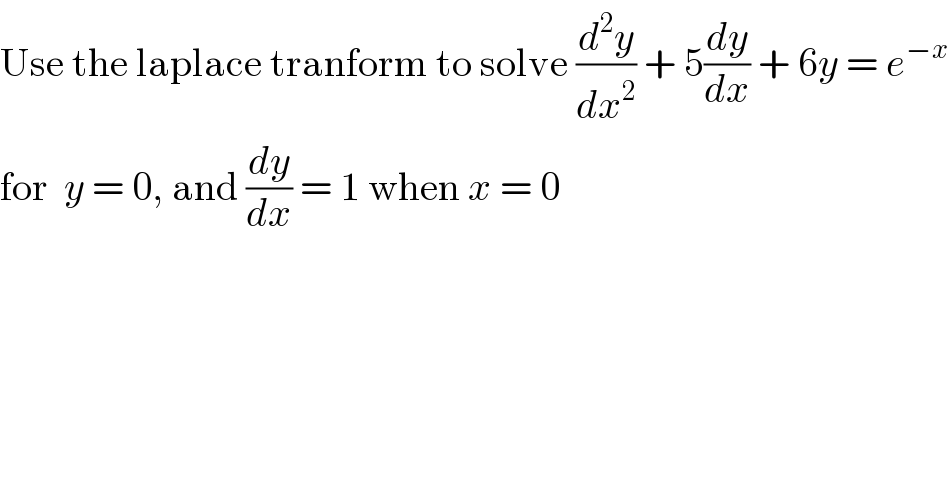
Question and Answers Forum
Previous in Differential Equation Next in Differential Equation
Question Number 98993 by Rio Michael last updated on 17/Jun/20

Answered by mathmax by abdo last updated on 18/Jun/20
![y^(′′) +5y^′ +6y =e^(−x) with y(0)=0 and y^′ (0) =1 (e) ⇒L(y^(′′) )+5L(y^′ )+6L(y) =L(e^(−x) ) ⇒ x^2 L(y)−x y(0)−y^′ (0) +5(x L(y)−y(0))+6L(y) =L(e^(−x) ) ⇒ (x^2 +5x +6)L(y) −1 = L(e^(−x) ) we have L(e^(−x) ) =∫_0 ^∞ e^(−t) e^(−xt) dt =∫_0 ^∞ e^(−(x+1)t) dt =[−(1/(x+1))e^(−(x+1)t) ]_0 ^∞ =(1/(x+1)) (e)⇒(x^2 +5x+6)L(y) =1+(1/(x+1)) =((x+2)/(x+1)) ⇒L(y) =((x+2)/((x+1)(x^2 +5x+6))) ⇒ y =L^(−1) (((x+2)/((x+1)(x^2 +5x +6)))) let decompose f(x) =((x+2)/((x+1)(x^2 +5x+6))) x^2 +5x +6 =0 →Δ =25−24 =1 ⇒x_1 =((−5+1)/2) =−2 and x_2 =((−5−1)/2) =−3 ⇒ f(x) =((x+2)/((x+1)(x+2)(x+3))) =(1/((x+1)(x+3))) =(1/2)((1/(x+1))−(1/(x+3))) ⇒ y(x)=L^(−1) (f) =(1/2)L^(−1) ((1/(x+1)))−(1/2)L^(−1) ((1/(x+3))) =(1/2)e^(−x) −(1/2)e^(−3x) the solution is y(x) =((e^(−x) −e^(−3x) )/2)](Q98997.png)
Commented by Rio Michael last updated on 18/Jun/20

Commented by abdomathmax last updated on 18/Jun/20

